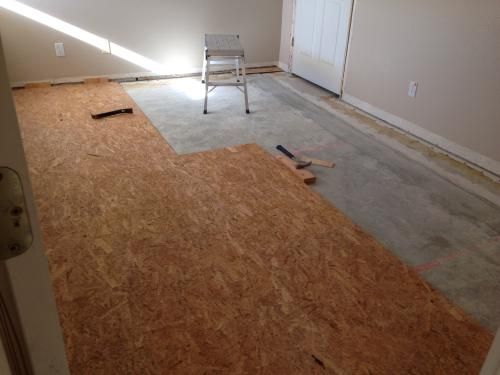A Guide to Dricore Subfloor Membrane Panels
If you're looking to install new flooring in your basement, you may have come across Dricore subfloor membrane panel as an option. Dricore panels provide a warm, dry, and level substrate for flooring installation. In blog post, we'll take an in-depth look at Dricore subflooring - what it is, how it works, its benefits, and how to install it properly.

What is Dricore?
Dricore is a patented subflooring system made up of OSB (oriented strand board) panels attached to a bottom layer of plastic. This plastic membrane acts as a moisture barrier, preventing water vapor from seeping up from the concrete below into the flooring above. The system creates an air gap between the concrete and the subfloor, allowing moisture to dissipate while insulating the floor.
Dricore panels interlock together kind of like puzzle pieces. The seam where two panels meet has an overlapping "tab" design that covers the joint. This prevents moisture from getting in between panels.
On top of the OSB is a pre-attached dimpled plastic membrane. This creates air pockets between the OSB and the flooring above. Air is an excellent insulator, so this design provides a thermal break as well as moisture protection.
How Dricore Subflooring Works
Here's how Dricore's patented subfloor system works:
- The bottom plastic membrane seals out moisture from the concrete slab. It blocks liquid water, water vapor, and radon gas from moving upward.
- The OSB gives a solid, stable surface for installing all kinds of flooring. It resists swelling or degrading over time.
- The dimpled membrane on top of the OSB creates an air gap between the subfloor and your finished floor. This gap insulates the floor against cold from the concrete below.
- The overlapping tab design connects panels tightly. This prevents moisture from seeping between panel seams.
Benefits of Dricore Subflooring
Installing Dricore subfloor panels provides many advantages over laying flooring directly on a concrete slab:
- Moisture protection – The plastic membrane keeps moisture from passing from the concrete into flooring materials above. This prevents moisture damage, mold growth, and flooring failures.
- Thermal break – The air pockets act as insulation against the cold of the concrete. This makes floors warmer underfoot.
- Noise reduction – With an air gap rather than direct contact, noise transmission from foot traffic or dropping items is reduced.
- Applicable over many surfaces – Dricore can be installed over concrete, OSB, plywood, or an existing floor. The panels adapt the surface for new flooring.
- Levels out floors – The OSB panels create a flat, even subfloor surface for the finished flooring. Dricore compensates for variations in the slab below.
- Radon gas mitigation – The sealed membrane acts as a gas barrier, reducing radon levels from the ground.
- Long-lasting – With mold/moisture resistance and stability over time, Dricore provides a durable subfloor for decades.
How to Install Dricore Subfloor Panels
Installing Dricore subfloor panels takes careful planning and precision, but is something a skilled DIYer can manage. Here are some tips:
- Clean the concrete slab thoroughly to remove dirt, debris, oil, waxes, or old adhesives. Grind down any high spots.
- Lay out the panel pattern across the floor. Cut panels as needed to fit at walls and other obstructions.
- Place the first panel against the wall. Connect panels together by engaging the tab joints and tapping with a rubber mallet.
- Use included screws and tape to cover all seams between panels. This creates an airtight moisture seal.
- Install panels so that joints do not align with joints in the finished flooring above. Stagger seams for strength.
- For large floor areas over 40 feet in length/width, incorporate expansion gaps and breaks as recommended.
- Once all panels are installed, vacuum the subfloor before beginning finished flooring installation.
